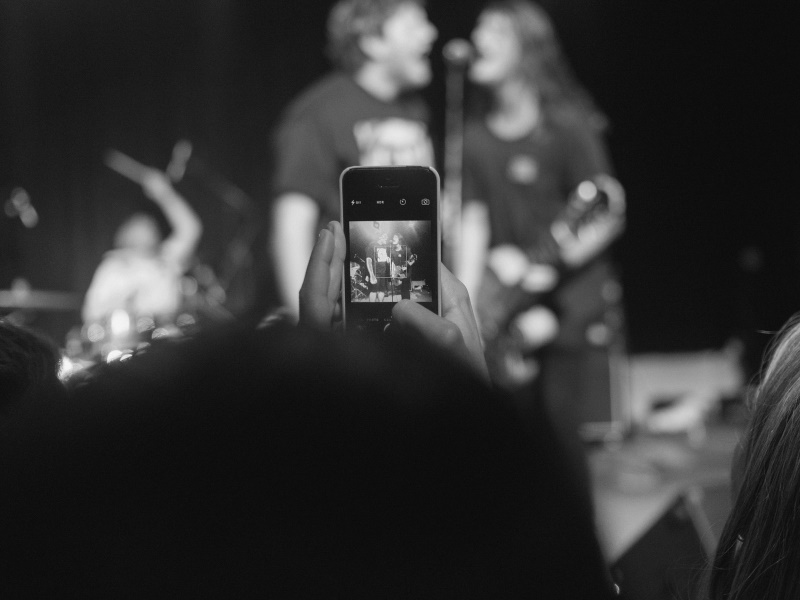
Alicia Keys has her fans lock their smartphones in a gray, rubbery pouch for the duration of her shows. To open it, you have to step outside and tap it on a metal fob. Dave Chappelle, the Lumineers, Louis C.K. and even the newly reunited Guns N’ Roses do the same.
Adele, on the other hand, is a little more … err … vocal about her feelings. The singer stopped her May 29 concert in Verona, Italy, to ask a fan to stop filming her show. Ironically, another fan caught Adele’s request on camera – presumably by using a smartphone.
Thanks to a patent granted to Apple on Tuesday by the US Patent and Trademark Office, these measures may soon be unnecessary.
Put simply, this patent is for – among other things – technology that could potentially allow music venues to disable a smartphone’s camera.
The technology itself is pretty straightforward. Apple could build infrared sensors into the camera on its smartphones, which would be able to pick up signals broadcast by strategically placed infrared emitters.
This is the same exact technology that’s in your old television remote – when you decide to flip from a baseball game to “Sleepless in Seattle,” you point the remote at the television and click. That transmits an infrared signal to the television, which is equipped with a receiver. It processes the information and – boom! – Tom Hanks and Meg Ryan appear on screen.
As you know, though, if you point the remote at the neighbor’s house instead of the television, nothing happens. Those infrared signals require a direct line of sight, which is what makes it perfect for this sort of application.
All a venue would have to do is broadcast infrared signals from its stage that instruct the iPhone, iPad, iWhateverComesNext (or other smartphone or tablet) to turn off, and voila! Adele won’t need to stop singing about her exes to lecture fans for filming the show.
And don’t worry – the patent isn’t only about stopping Apple users from doing things. A transmitter could also be used to heighten certain experiences, such as retail shopping or museum browsing.
As outlined in the patent, a transmitter could be placed near museum exhibits and programmed to send information about said exhibit to your phone. It would work similar to the way QR codes do now – point your phone at the exhibit and information about it pops up on your screen – but without requiring users to line up their cameras precisely with the code, meaning more people could receive the information simultaneously.
The same could be done with shopping. Just aim the phone at, for example, a car in a dealer’s showroom and find out how much it costs, what comes standard in it, etc.
All of this comes with an enormous caveat, though: There’s a very good chance this technology will never make it onto our phones. (Sorry, Adele!) As Apple Insider reported, Apple holds thousands of patents. The company was awarded 2,003 in 2014 alone. And as Wired and Tech Insider both reported, big companies tend to apply for broad swaths of patents just to have them, but most never end up getting used.
As is fairly customary, Apple hasn’t commented on whether it plans to actually build the technology outlined in the patent, but performers can rest a little bit easier knowing it just might.
© 2016 The Washington Post
Download the Gadgets 360 app for Android and iOS to stay up to date with the latest tech news, product reviews, and exclusive deals on the popular mobiles.




